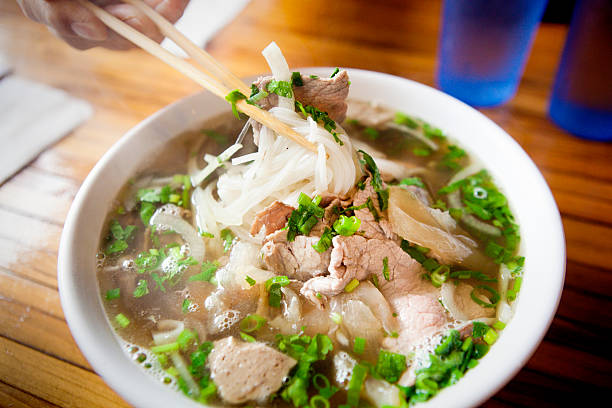A Culinary Journey Through Vietnam: Exploring the Unique and Innovative Food Culture
Vietnam's culinary landscape is a beautiful blend of aromatic flavors, vibrant colors, and varied textures. It's a cuisine that tells a story, one steeped in history, culture, and regional diversity. This article invites you on a gastronomic journey through Vietnam, exploring the country's unique food culture and innovative culinary trends.

The Landscape of Vietnamese Cuisine
The first thing to note about Vietnamese food is its diversity. From the hearty, meaty dishes of the north to the lighter, herb-infused flavors of the south, each region has its distinctive culinary style. Central Vietnam, known for its complex and spicy dishes, presents a fascinating contrast. This culinary diversity results from the nation’s varied geography, climate, and cultural influences.
The Art of Vietnamese Street Food
Street food is at the heart of Vietnamese cuisine. From bustling city markets to sleepy rural towns, street food vendors offer a wide array of dishes. Pho, a fragrant noodle soup, is a staple, while banh mi, a Vietnamese baguette stuffed with various fillings, shows the French colonial influence. Other popular street foods include goi cuon (fresh spring rolls) and banh xeo (crispy pancakes).
Fresh and Healthy: The Hallmark of Vietnamese Food
Vietnamese cuisine stands out for its healthiness. Fresh herbs, lean meats, seafood, and a generous use of vegetables dominate the menu. Most dishes are cooked with minimal oil, and sauces are typically light, favoring tanginess over heaviness. This focus on health is a reflection of Vietnam’s age-old traditional medicine and holistic health beliefs.
Experimental Fusion: The New Wave in Vietnamese Cuisine
The modern Vietnamese culinary scene is a hotbed of innovation, with chefs constantly experimenting with new flavors and techniques. Fusion cuisine, blending traditional Vietnamese flavors with global influences, is gaining popularity. Dishes like pho burgers and banh mi tacos showcase this creative spirit, offering a fresh take on classic Vietnamese food.
A Taste of Vietnam’s Beverage Culture
No Vietnamese meal is complete without a drink. Traditional beverages like tra (tea) and ca phe (coffee) hold a special place in daily life. In recent years, innovative drinks like egg coffee and coconut coffee have captured the attention of both locals and tourists, adding a playful twist to Vietnam’s beverage culture.
A Few More Bites of Vietnam
- Vietnam’s national dish, Pho, varies regionally. Northern Pho is typically simpler and purer, while Southern Pho is sweeter and more robust with herbs.
- Vietnamese desserts, often featuring ingredients like coconut milk, rice, and tropical fruits, offer a delightful end to any meal.
- Nuoc Mam, a fermented fish sauce, is a staple in Vietnamese cooking, adding a distinct umami flavor to dishes.
- Vietnamese cuisine often includes five elements related to taste (sour, bitter, sweet, spicy, and salty) to correspond to the five basic elements of the universe (metal, wood, fire, water, and earth).
In conclusion, Vietnamese cuisine is a vibrant tapestry of flavors, textures, and cultural influences. Its rich diversity, focus on fresh and healthy ingredients, innovative street food culture, and burgeoning fusion trends make it a fascinating culinary destination. So, whether you’re a food lover, a culinary adventurer, or simply curious, embark on a Vietnamese culinary journey and savor the delicious symphony of flavors that await.




